Life
Sign up for our newsletter
We summarize the week's scientific breakthroughs every Thursday.
-
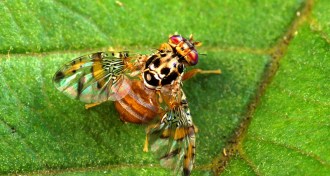 Plants
PlantsMedfly control methods were ready for pest’s influx
50 years ago, researchers prepared to greet Mediterranean fruit flies with sterile males.
-
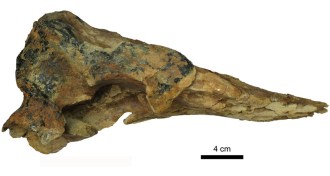 Animals
AnimalsRare fossils expand evolutionary history of sperm whales
A pygmy fossil unearthed in Panama reveals that the organ the whales use to produce sound and echolocate shrunk over time.
-
 Paleontology
PaleontologyThis dinosaur’s ride may have been a glide
A new dino called Yi qi may have taken to the skies with wings akin to those of pterosaurs and flying squirrels.
-
 Plants
PlantsA protein battle underlies the beauty of orchids
The petal-and-lip shape that draws pollinators to orchids results from a competition between two protein complexes, a new study finds.
-
 Ecosystems
EcosystemsJust 1 percent of Amazon’s trees hold half of its carbon
Roughly 1 percent of tree species in the Amazon rainforest account for half of the jungle’s carbon storage.
-
 Earth
EarthHidden water found deep beneath Antarctica desert valley
New imaging reveals liquid water network beneath Antarctica’s McMurdo Dry Valleys that could support microbial life.
-
 Neuroscience
NeuroscienceFor the blind, hearing the way forward can be a tradeoff
Many blind people have enhanced hearing. A new study shows that the ability to hear your way forward might come at the cost of hearing up and down.
-
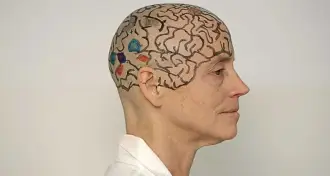 Neuroscience
NeuroscienceBrain on display
In her online videos, Nancy Kanwisher goes where few other neuroscientists go.
-
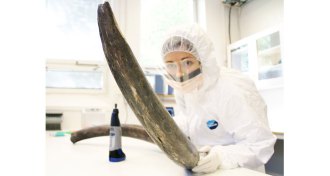 Animals
AnimalsWoolly mammoth DNA shows toll of low diversity
A new sequencing analysis of two woolly mammoth genomes reveals evidence of genetic decline due to isolation and inbreeding just prior to extinction.
-
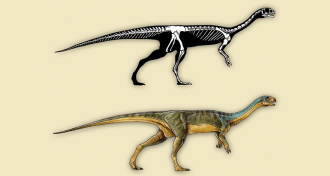 Paleontology
Paleontology‘Frankenstein’ dinosaur was a mash-up of meat eater and plant eater
Fossils of a bizarre-looking dinosaur found in Chile are challenging ideas about how dinosaurs adapted to their environments.
-
 Microbes
MicrobesCity- and country-dwelling microbes aren’t so different
A new study reveals the microbial communities in our nation’s dust.
-
 Genetics
GeneticsGene in human embryos altered by Chinese researchers
Chinese researchers have genetically altered human embryos.